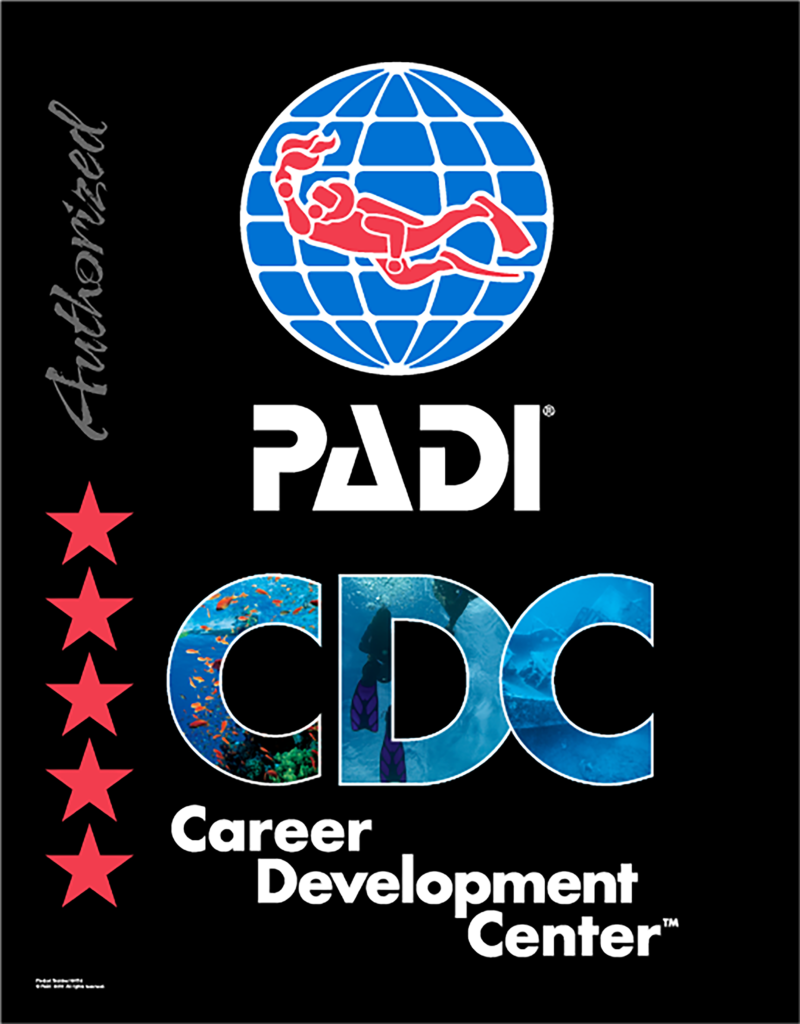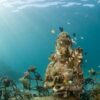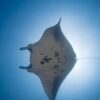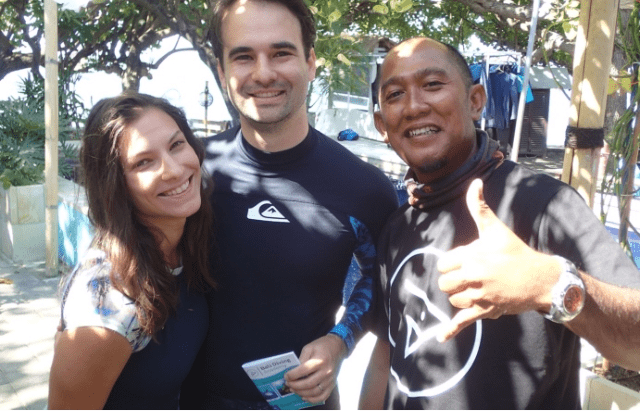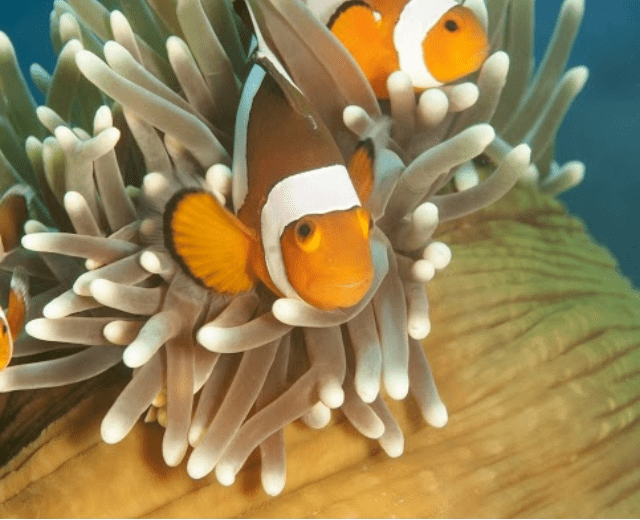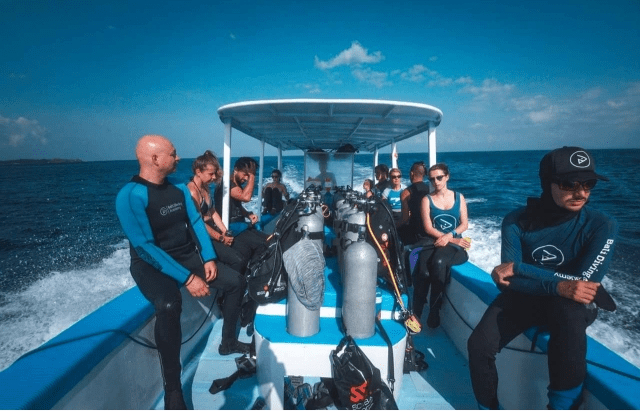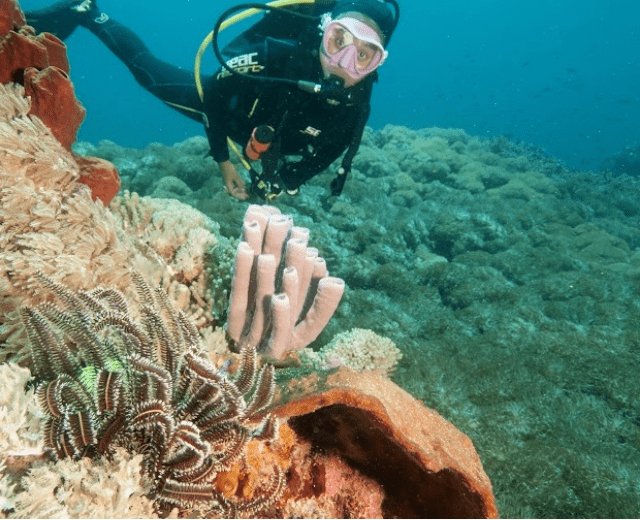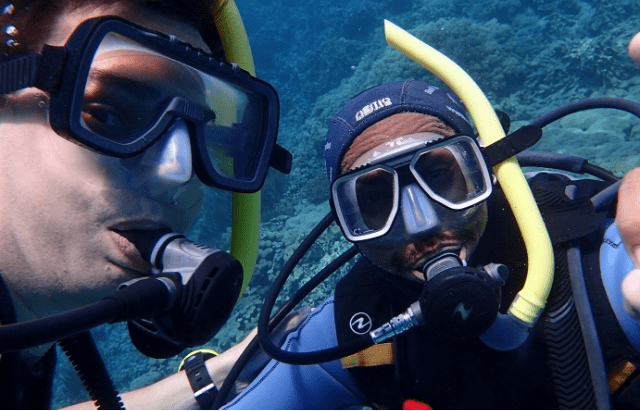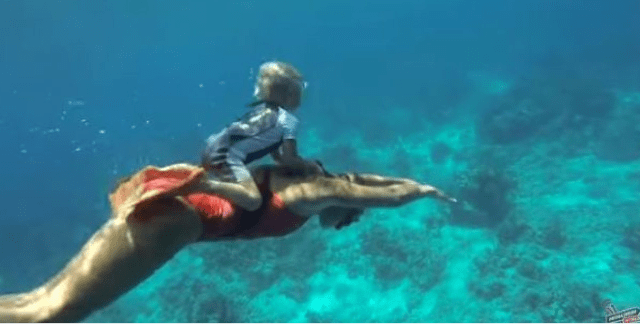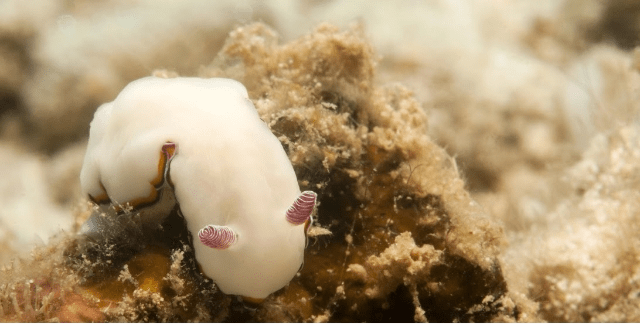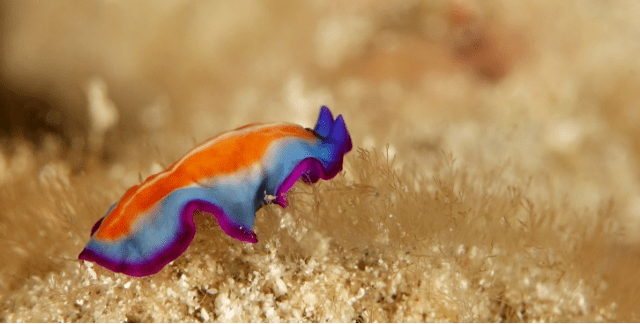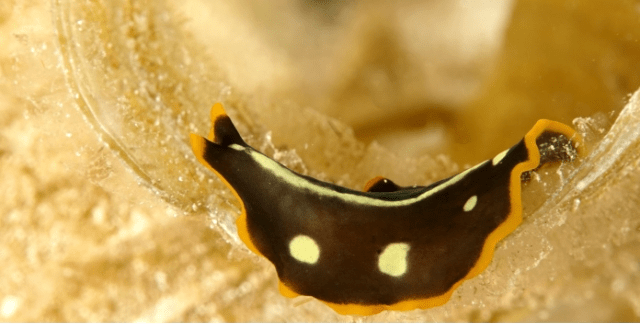Biorock Project: Karang Lestari
Saving a community
![]()
Biorock project
Text : Karin van Beeck
Photos : Dray van Beeck
At the foot of the Pulaki Mountains in the northwest of Bali, lays the beautiful bay of Pemuteran. Here you can find spectacular reefs and a huge variety of marine life only a five minute boat ride from the coast. It is a real divers’ paradise with coral gardens, drop-offs, muck dive sites and even an underwater temple! However, the story of Pemuteran was not always a happy one.
In 1998 two things happened which caused a disaster in Pemuteran. First the Asian economy crashed and Indonesia was especially hard hit by it. It caused thousands of economic refugees to stream into Bali in the hopes of finding work here. Many who could not find work found that the only way to provide for their families was to fish in the waters around Bali, and unfortunately quite a few turned to dynamite fishing as the fastest way to turn a profit. Others practiced cyanide fishing, where poison is used to stun fish that can be collected for the aquarium and live fish trades. The problem with both of these fishing methods was that it not only allowed them to catch the fish they wanted, but that it also led to the destruction of the reefs.
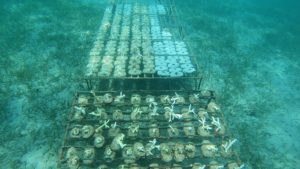
The second disaster in 1998 was that it was an El Nino year. El Nino is a natural phenomenon which causes the temperature of the oceans to rise. It is not caused by global warming, but scientists believe that global warming is causing El Nino years to occur more frequently and last longer than in the past. Corals live in symbiosis with algae called xooxanthellae which provides coral polyps with food, oxygen and is also responsible for the coloration of different corals. When the water gets too warm, the algae abandon the coral polyps to float in the current as part of plankton. Without the algae, corals appear bone white and while not dead yet; they are slowly starving. If the water temperature drops, the algae will reoccupy the corals and they will survive, but if the water stays warm for an extended period, the corals will die. This is exactly what happened in many parts of the world, Pemuteran included, in that year. The corals bleached and could not recover, and big portions of the reefs died off.
The local community in Pemuteran in 1998 consisted mainly of fishermen, a lot whom still used traditional fishing methods. They were the hardest hit by these disasters, because they had to go a lot further to find fish and their catch was a lot smaller. The tourist industry was also in an uproar; because of extensive damage to the reefs; divers and snorkelers stopped coming and hotels and guest houses were standing empty.
The Pemuteran community leaders realized that they had to take decisive action, and fast! First of all they banned all dynamite and cyanide fishing. To enforce this, they formed the Pecalang Laut, or Sea Guardians to patrol the reefs in Pemuteran bay with small, high speed boats. Fist time offenders were warned, the second time they got caught breaking the rules, the punishment was more severe. Illegal fishing methods slowly started to decline, but the breaking point came after the Pecalang Laut arrested a big group of fishermen who had bombed a school of tuna. They were all arrested, their catch confiscated and all the boats were impounded. After that there was a marked change in the attitude toward fishing in the region and bombing and cyanide fishing stopped completely. It also helped that the community leaders explained to people what they were trying to do and the reasons behind it.
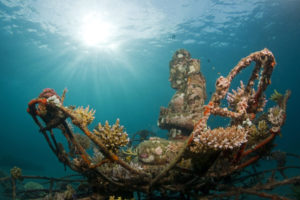
Another big problem still remained. Most fish nurseries were destroyed and it would have taken ages for the fish stocks to go up again. There simply was not enough healthy portions of reef left to shelter juvenile fish. Help was coming from a totally different direction though! In the end of 1998 Yos Amertha, a Pemuteran resident who was also the President of the Balinese Watersports Federation at that time, attended a Coral Reef Restoration Workshop in Thailand. He met two men who would have a massive impact on the future of reefs in Pemuteran. They were Wolf Hilbertz, a German professor of architecture, and Tom Goreau, an American Marine Biologist. Both of them were worried about the decline of the worlds’ coral reefs and believed that they might have found a way to make a difference. Wolf Hilbertz had just discovered that it was possible to grow ‘rock’ under water through mineral accretion, which is a natural process used by marine animals to build their limestone shells. He had found a way to speed up this process and hoped that it could be used to promote the growth of coral reefs. Tom Goreau had the scientific coral reef knowledge that was necessary; all they needed was a place to experiment to see if it would work.
Yos Amertha invited Wolf and Tom to Pemuteran in the hope that they could help save the reefs. They started their first experiment in June 2000. The first step was to build metal structures which would form the foundation of the artificial reefs. This was done with construction steel bars, also known as re-bar, about 1 to 1.3 cm in diameter, which was bent into different shapes and welded together. The advantage of using re-bar is that it is not very expensive, you can buy it pretty much anywhere and it is easy to weld together. This meant that these structures could be build pretty much anywhere in the world and that you did not need skilled welders either. They tried a few different designs and, once the first structures were built, they were carried out onto the beach, floating buoys were attached and divers and snorkelers pulled them out into the ocean. Once they reached the area where they were to be sunk, the buoys were pulled loose and they lowered the structures onto the sandy bottom in depths of between 3-6 meters.
The next step was to lay sets of power cables. The cables were buried deep under the sand on the beach and laid over the seabed. One cable of each set was attached to each of the metal structures to form a positive pole and the other to a titanium mesh or anode that was positioned a few meters away from each structure, to form a negative pole. Once everything was in place, the cables were attached to a power source on the land and an electric current of 12V started to flow through the cable. The whole setup worked as a galvanic cell underwater and an electrochemical reaction took place which raised the pH level of the metal, which caused minerals to accrete on the structures within hours of being connected to the power supply.
Once it was clear that the process was working properly, the scientists and some volunteers went to collect broken corals from the outlying reefs. The corals were transported in buckets of seawater to cause as little stress to the animals as possible. They were then attached to the structures with metal wires to keep them in place. They tried to collect as many different coral species as possible, to maintain the same biodiversity you would find on a natural reef. All that could be done after that was to wait and see what would happen.
It soon became apparent that the experiment was a success! Most of the transplanted corals were flourishing. Normally hard corals grow their skeletons by injecting thin layers of limestone underneath the cup in which each coral polyp is sitting. This takes a lot of energy though, which is why hard corals tend to grow very slowly. The electric current flowing through the structures helped the coral to convert energy into limestone, which meant the polyps had more energy left over for reproduction and defense. The corals on the Biorock structures tended to grow 3-5 times faster than corals on natural reefs; were very brightly colored, supported dense fish populations and seemed to be more resistant to environmental stress.
This was a very important discovery, because reefs all over the world are in decline because of global warming and pollutants in the water. Reefs are extremely important, not only as marine life nurseries and for tourism, but also because they form natural barriers between the ocean and coast lines. Without coral reefs, billions of dollars worth of coastline properties will be destroyed. The only way to prevent this damage; is to build seawalls, of which construction costs will be incredibly expensive. Creating this kind of artificial reef with more resistant corals would allow us to protect coastlines and marine life habitats.
When Pak Agung Prana, the owner of Taman Sari resort in Pemuteran bay, found out about the successful experiment, he requested that a big artificial reef be build in front of his resort to act as a fish nursery for the rest of the bay. They started building it in 2003 and today it is 300 m long, covers an area of 2 hectares and consist of more than 65 structures. It is the biggest reef restoration and coral reef nursery of its type in the world. Pak Agung Prana is still the biggest financial contributor to the project and pays for most of the electricity needed to power it, together with Bali Diving Academy and Pondok Sari. Most of the structures today have become limestone statues, covered in living coral which is providing a home for many different fish species. It also seems that the coral reef surrounding the structures, have benefited from the electrical field; it is very healthy and most of the electrical cables have been integrated into the reef.
To raise international awareness and to educate the people in the villages regarding the Biorock project as well as the conservation work of the Pecalang Laut, Rani Morrow-Wuigk made a film to document the process. This was a huge success and, together with the educational work Chris Brown from ReefSeen had been doing in the villages, had a major influence in stopping destructive fishing methods as well as preventing fishermen from fishing on the Biorock project. Actually, once fishermen saw how successfully the structures attracted fish, it was decided by the village to make another set of structures specifically for the fishermen to increase fish stocks that remain.
What happened in Pemuteran caused a big change in the whole community and shifted the main industry from fishing to tourism. Fishermen started to offer snorkeling and diving excursions, as well as sunrise and sunset cruises to replace income previously made from fishing. They realized that ecotourism and protecting the reef benefit the community and as a result, most of the community is dedicated to making the program work. This total community support is unique to Pemuteran village but its success has inspired other communities throughout Indonesia who have initiated similar schemes. In acknowledgement of this achievement, the Community of Pemuteran was awarded various prizes, amongst them the Equator Prize 2012, a United Nations award for Marine and Coastal Zone Management, the SKAL for the World’s Best UW Eco-Tourism Project and the KONAS Award for the best Community Based Coastal Zone Management Project in Indonesia.
The Biorock is a non-government project and is sponsored through donations from outside. Because so many people have expressed interest in helping, the ‘Adopt a baby coral Project’ was started a few years ago. For a donation of U$35, your name gets shaped out of metal wire and attached to the structure together with a harvested coral. You will then receive photos of your coral via e-mail, to see how it is growing. The main reason the project is working so well, is because of the staff working at the Biorock center. They are responsible for making sure the electric cables are not dislodged, the power sources work properly, cleaning the structures when needed to prevent the growth of algae and too many sponges and also to ensure that divers and snorkelers do not damaged the corals. It is a full-time job which they do very well!
Today the Biorock reef is as healthy as ever with an abundance of marine life. Some of the structures have now been taken off the power grid to grow naturally while new structures have been connected. The first ‘green’ structure; the Coral Goddess, have been erected and is powered only by solar panel and wind turbine. It is not only the Biorock which is worth visiting though. Thanks to the ongoing work of the Pecalang Laut to prevent destructive fishing, the offshore reefs have completely recovered and are absolutely teeming with marine life. People come from all over the world to dive and snorkel here and all find it a very rewarding experience. We are certainly feeling blessed to live in a community which is taking conservation so seriously and has access to such wonderful reefs!
Biorock info :
Karin and Dray work as managers for Bali Diving Academy, a major contributer to the Biorock project.
TESTIMONIALS
![]()
GALLERY
![]()

